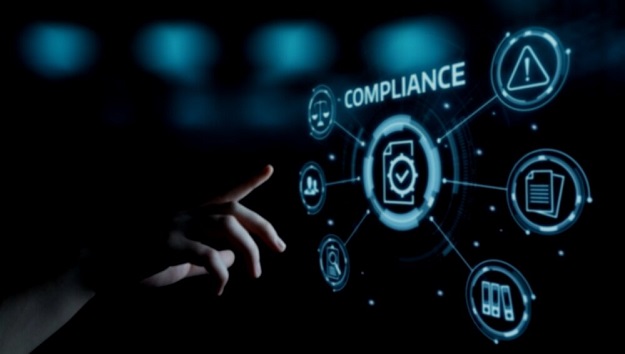Keeping a company compliant is important, and this applies to IT companies as well. Luckily, there are several benchmarks and laws that govern how companies need to be keeping their data secure. Below we will discuss some tips on compliance and security in IT companies.
Security vs compliance
Getting the right balance between compliance and security is crucial to protecting sensitive information. But achieving this feat is not as easy as it sounds. If you’re in a highly regulated industry, keeping track of all the relevant compliance and security requirements can be a full time job in and of itself.
While both security and compliance can be useful, the best approach is to incorporate them into a unified and comprehensive security program. Security involves implementing technical controls to protect assets, while compliance covers regulatory requirements and legal risk.
A solid IT security program will allow your company to be compliant while at the same time protect your company’s assets from cyber-attacks. Security can also be incorporated into business processes, such as providing network access to customers or vendors. A robust compliance system will also make it easier for you to meet regulatory requirements.
PCI-DSS compliance
Whether you are a merchant, services provider or IT company, you must be PCI-DSS compliant. This means that you need to have proper record keeping, a strong firewall, and a robust security policy. Click the link to find out more about this standard.
A firewall is the first line of defense against cybercriminals. It is designed to block foreign entities from accessing private data. It can also enforce security policies.
PCI-DSS compliance in IT companies involves maintaining the security of cardholder data. This requires a written information
security policy that includes safeguards and roles. This policy should be distributed to employees and contractors. It should also include a list of devices and applications.
Another important PCI-DSS requirement is to implement secure remote communication. This means that you need to implement security protocols such as SSL or TLS. The standard also recommends strong passwords. Passwords should be different characters and avoid dictionary words.
Federal Information Security Management Act (FISMA)
Originally designed to be applied only to federal agencies, FISMA has expanded its scope to include private organizations that work with federal agencies. Click the link: https://www.cisa.gov/federal-information-security-modernization-act for more information about FIMSA. Organizations are responsible for protecting sensitive data and information. They can achieve FISMA accreditation by meeting certain guidelines.
FISMA is a United States law that requires all federal agencies to develop an information safety program and implement an information safety plan. It also requires federal contractors to implement safety standards. Federal agencies are also required to report safety breaches and incidents to Congress.
Federal Information Safety Management Act was passed as part of the E-Government Act of 2002. It was designed to protect federal networks and IT systems. In addition to federal agencies, it also affects contractors, private organizations, and service providers.
FISMA is a safety law that is designed to protect the confidentiality of sensitive data and information. It is similar to the Sarbanes-Oxley Act. FISMA has a variety of penalties. These include the loss of federal funding, reputational damage, and congressional censure.
It is important to ensure that FISMA compliance is maintained. FISMA regulations include requirements such as encryption of data lines, access control, and disaster recovery plans. FISMA also requires the head of each agency to develop and implement policies that reduce the risk of cyber safety incidents.
CIS Benchmarks
CIS benchmarks are designed to help organizations implement best practices for securing their digital assets. These safety best practices are defined by a team of subject matter experts and cyber safety experts.
These best practices are designed to minimize the attack surface and help organizations achieve safety maturity across their infrastructure. These best practices include a set of recommended configurations that help organizations secure common digital assets.
CIS benchmarks are a great way for organizations to achieve compliance with their regulations and decrease their risk of cyber-attack. CIS benchmarks also enable organizations to achieve safety maturity across their infrastructure. Organizations can then use these best practices to mitigate software issues and limit their attack surface.
The Role of a CCO
Typically, a Chief Customer Officer (CCO) is a senior executive who focuses on customer centricity and implementing a value driven culture. Their job is to make sure that the company maintains and builds customer loyalty. They are also involved in designing and launching new products.
The CCO is also responsible for implementing new processes to ensure customer satisfaction. CCOs also have to coordinate internal compliance in IT companies review activities. They also have to monitor the company’s finances. In order to meet these goals, the CCO needs to understand their customers and know how to communicate effectively.
CCOs have to be good at problem solving and should be willing to take feedback from customers. They also need to know how to write in a logical and clear manner. This is especially important when it comes to communicating with customers.

